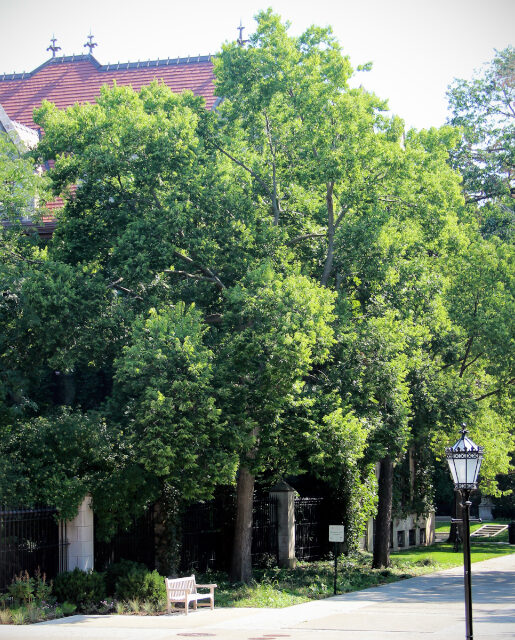Celtis occidentalis
The common hackberry produces high-fat, carbohydrate, and protein berries which are an important food source in the winter months for many bird species such as cedar waxwings and robins.
Location
See if you can spot our hackberry as you walk along Larch Lane. Whilst you’re there, see if you can find the patriot elm too!


History at Hadwen
The hackberry wasn’t found in any existing records of Hadwen’s original plantings. Though it’s not especially unusual, the hackberry that can be found in the arboretum wasn’t planted until much more recently, in 2022.
Keep Learning
Detailed Species Information
Common hackberry is a deciduous tree native to North America in the family Cannabaceae. Typically a medium-sized tree, the hackberry reaches 30–50 feet (9–15 meters) in height and can live from 150–200 years. The bark of this tree can range from browns or grays with a cork-like texture and distinct wart-like protrusions. The leaves of the common hackberry are asymmetrical with pointed tips and serrations around the margin except at the base. The berries of the hackberry are dark red when ripe in the fall and usually remain on trees through the winter. The seeds of hackberry are typically eaten and dispersed by birds and mammals.
Overall, the hackberry is able to acclimate to a variety of environmental conditions but prefers lowlands and limestone-rich soils. The tree is also an important host for butterflies which lay larvae on the tree. The wood of hackberry is rarely used commercially since it is not sturdy and rots easily. Although hackberry is tolerant of urban conditions, it has yet to be widely used for street tree plants or landscaping.
